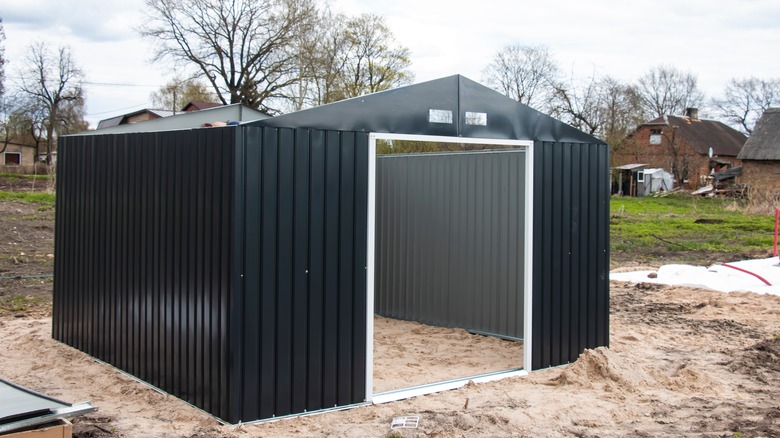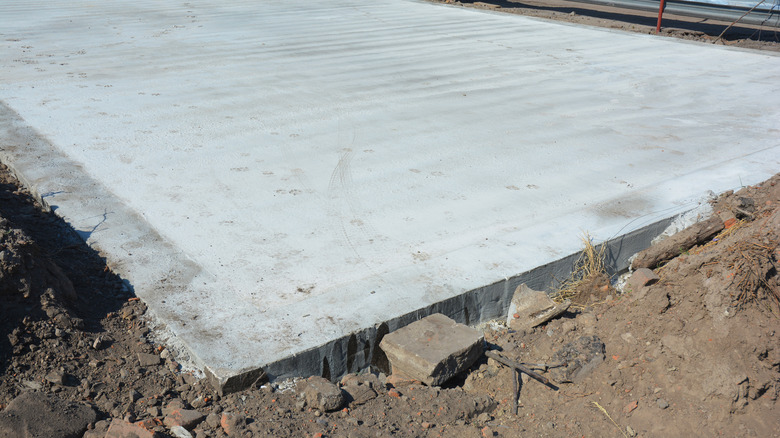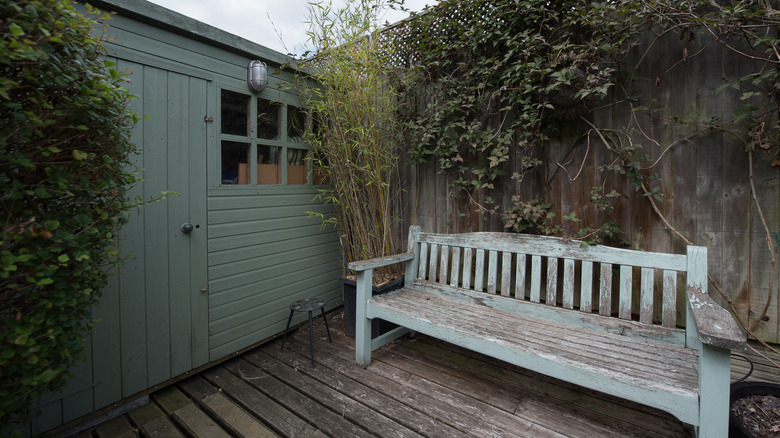Concrete Base Solutions For A Steel Shed (& 1 To Avoid)
Like any other structure, your steel storage shed needs a suitable foundation. By suitable, we mean a base that's solid, stable, level, and can support the load of the shed and the items stored inside. Ideally, you want the foundation to last long, too. And luckily, there is a wealth of shed foundation options that suit a variety of budgets and DIY installation skills. The best, and simplest of these solutions are made of concrete — a durable material that affords a strong, stable surface for the shed's structure. When properly installed, slab and paver foundations offer a level, stable surface for the steel shed to rest on. Slab foundations are better for larger, heavier sheds because they provide a solid floor that can handle hefty items. Meanwhile, pavers are a great choice for sheds with a smaller footprint and lighter items stored inside.
Below, we'll walk you through the two variations of concrete slab shed foundations, and explain what circumstances each is suitable for. We'll also explain what a paver foundation is, when it's appropriate to use one, and what the installation typically entails. Finally, you'll learn why using a wooden deck as a shed base — tempting as it may be — is not a great idea.
Solid slab and concrete paver shed bases offer stability and a level foundation
You have two primary options for building a solid slab base. The simplest is to pour the slab directly on grade. In this case, you have to clear the topsoil, excavate to a depth of over a foot or so, then cover the excavated area with a layer of sand before pouring the concrete. You'll need to smooth the entire surface of the freshly poured slab, then create grooves in it to act as control joints. The more complex option is to build a frost-proof concrete foundation; consider this solution if you live in a region where the soil freezes over in wintertime. This type of foundation requires you to excavate deeper and pour concrete footings and piers. In turn, the piers support the slab and prevent it from cracking in response to soil heaving as it goes through freeze-thaw cycles.
The concrete pavers you use outdoors are a simple storage shed foundation you can DIY even if you're on a budget. Laying down concrete pavers gives you the benefits of a stable surface, but without the hassle of putting up formwork or pouring concrete. This method entails digging up the topsoil, compacting the resulting surface using a tamper tool, then adding a layer of gravel, sand, and cement, then laying the pavers on top. To make the foundation surface as even as possible, you'll need to level the pavers individually with a rubber mallet.
Why decking bases are not ideal for steel sheds
If you have a large deck in the backyard, or are considering building one, you may be tempted to use the deck boards as a base for your shed. At a glance, this solution seems like a simple win-win. After all, you're building the deck already, why not extend its length a bit and accommodate the shed, too?
Well, there are several reasons you may want to reconsider placing your shed right on top of deck boards. Firstly, depending on the type of wood you're using, the boards may rot over time, which will cause the shed to lose its stability. Also, placing a structure on top of the deck creates the perfect conditions for algae and mold to appear and grow on the boards. That's because algae and mold emerge and flourish in shady areas with lots of moisture — and the shed will subject parts of the deck to periods of shade during the day. The result? You'll have to invest time and money into cleaning these pests off your deck boards. Finally, your steel shed may rust over time, and iron oxide will seep into the surrounding wood. When this happens, you'll need to employ plenty of elbow grease to get the rust out of the deck boards. So, instead of taking the easy route and installing your shed atop of the deck, find a way to situate it on its own, dedicated foundation.


